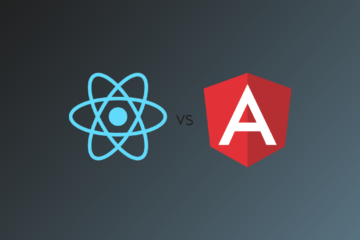
What Is Artificial Intelligence And Its Types How It Works
What is Artificial Intelligence:
A question pops up in everyone’s mind when one hears about AI. Well! in this post we have cleared every important and basic details you need to know about Artificial Intelligence. According top Father of AI “John McCarthy” Artificial intelligence (AI) is a modeling of human intelligence processes by computers, particularly computer systems. Expert systems, natural language processing, speech recognition, and machine vision are examples of AI applications.
Types of Artificial Intelligence:
AI can be classed in a variety of ways, but there are two primary sorts.
Type 1:
Weak AI or narrow AI: It is focused on a single restricted task, a phenomenon in which robots that are not sufficiently intelligent to accomplish their work can be developed in such a way that they appear intelligent. A poker game in which an automated device beats a person in which all rules and movements are input into the machine is an example. Every feasible scenario must be entered manually beforehand. Every ineffective AI will contribute.
Strong AI: Machines that can reason and accomplish tasks on their own, just like humans. There are no existing examples, however, some industry leaders are particularly interested in getting one step closer to constructing a strong AI, which could result in quick advancement.
Type2 (functionality based):
Reactive Machines: This is one of the most fundamental types of AI. It has no memory and cannot utilize past information to plan future actions.
Limited memory: AI systems with limited memory can use past experiences to inform future conclusions. Some decision-making functions in self-driving automobiles are created in this manner. Observations are used to guide activities that will occur in a few decades, such as an automobile changing lanes. These insights, as well as Apple’s Chatbot Siri, are not saved indefinitely.
Theory of Mind: This sort of AI should be able to understand and interact socially with people’s emotions, beliefs, thoughts, and expectations. Despite significant advancements in this sector, this type of AI is not yet complete.
Self-awareness: An AI with its consciousness, superintelligence, self-awareness, and sentience (basically, a complete human person). Of course, this type of bot does not exist, and if it is developed, it will be a watershed moment in the field of artificial intelligence.
How Artificial Intelligence Works:
Manufacturers have been scrambling to demonstrate how AI is applied in their products and services as the enthusiasm surrounding AI has grown. They say that AI is just a component of technology like Machine learning. To write and train learning algorithms, AI involves the usage of sophisticated software and hardware. Although there is no particular programming language that is synonymous with AI, Python, R, Java, C++, and Julia is often used by AI developers.
In general, AI systems operate by consuming huge volumes of labeled training data, analyzing the information for correlations and patterns, and then using these findings to forecast future states. In this approach, chatbot-fed text samples can learn to make lifelike dialogues with people, or an image recognition technology can learn to recognize and describe items in photographs by examining millions of examples. New, quickly increasing generative AI techniques can generate realistic text, graphics, music, and other material.
Artificial intelligence programming focuses on cognitive abilities such as the following:
Learning: This element of AI programming is concerned with gathering data and developing rules for turning it into usable information. The rules, known as algorithms, teach computing equipment how to execute a certain task in a step-by-step manner.
Reasoning: The reasoning aspect of artificial intelligence programming is concerned with picking the optimum algorithm to achieve a specific result.
Self-correction: This AI programming feature is designed to constantly fine-tune algorithms in order to give the most accurate results possible.
Creativity: Creativity is a branch of artificial intelligence that generates new visuals, text, music, and ideas using neural networks, rules-based systems, statistical approaches, and other AI techniques.







